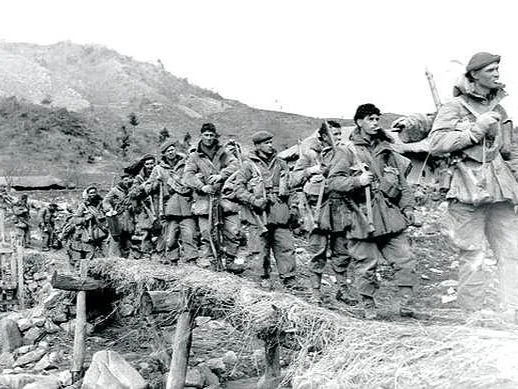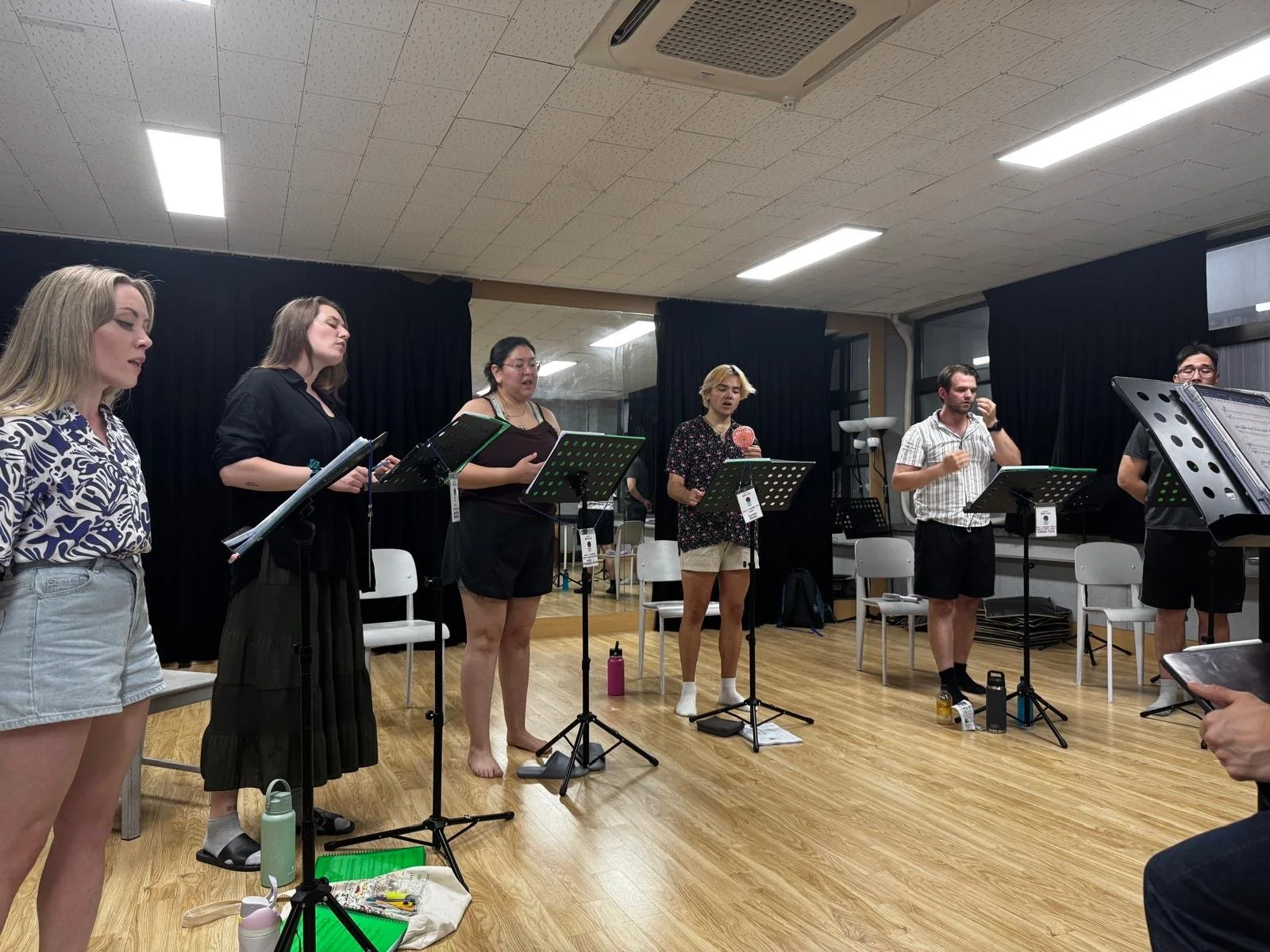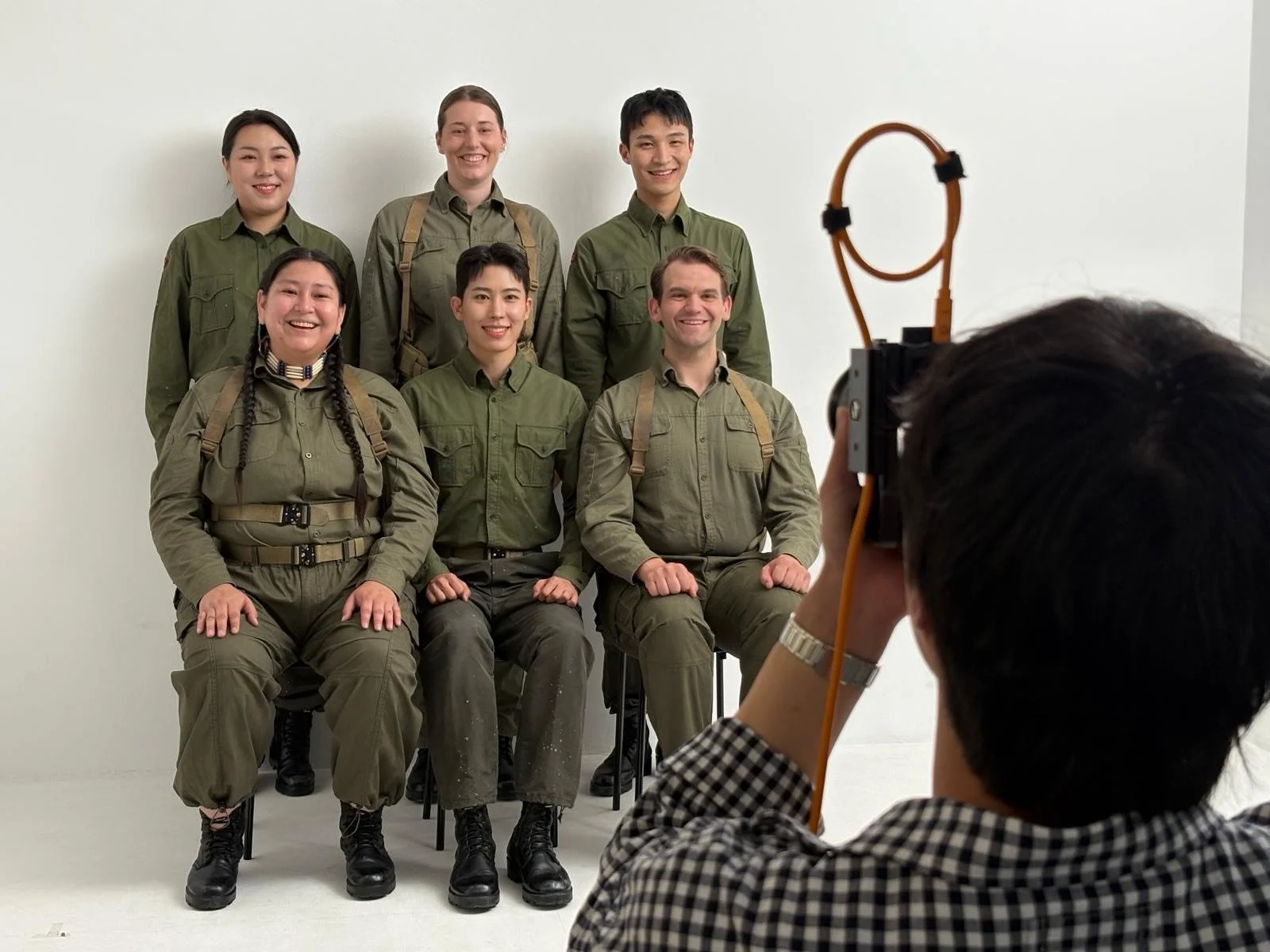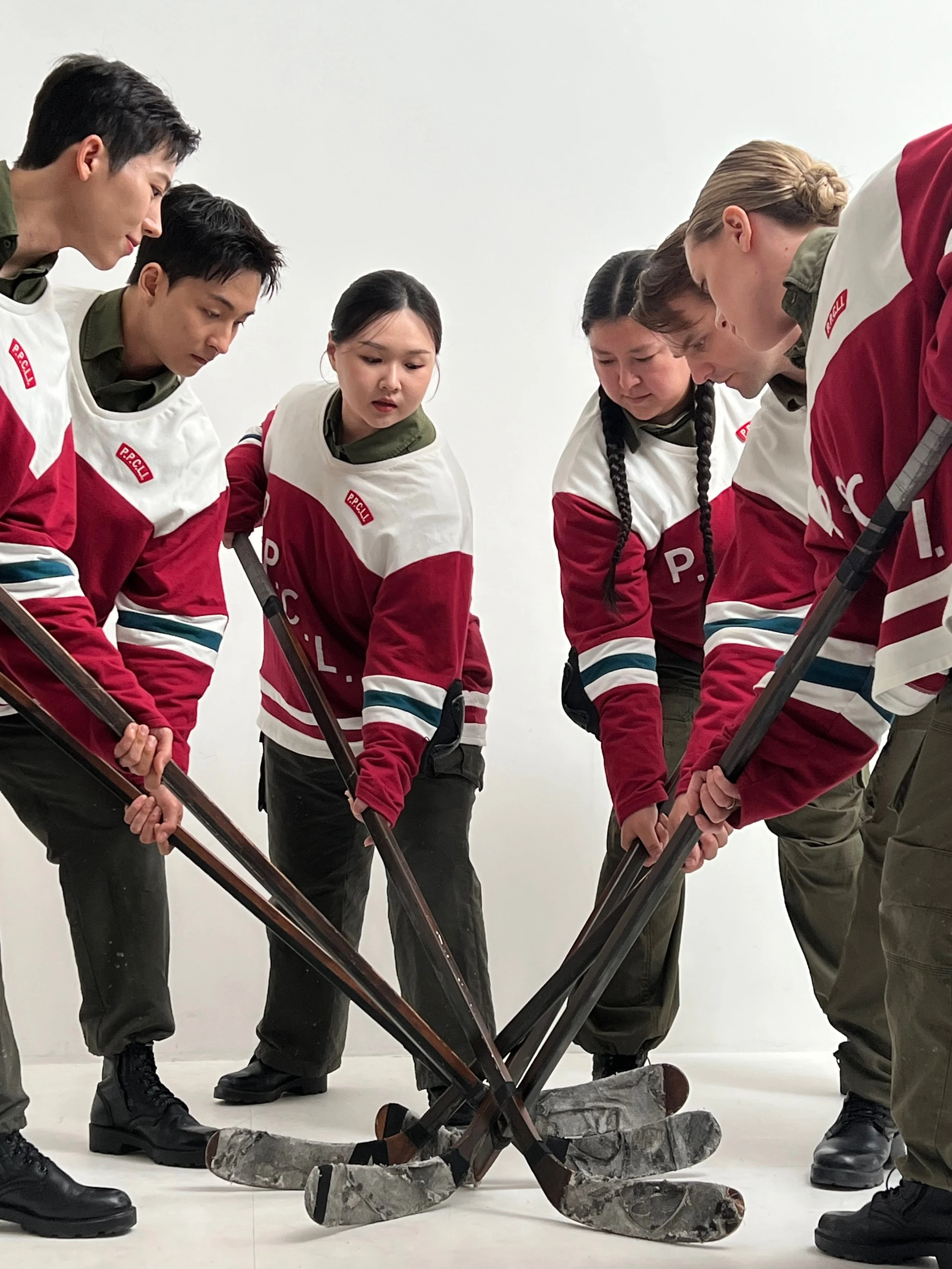R;LINK - The Story Behind the Remarkable New Musical
The attack came at night. Seven-hundred Canadians—soldiers of the 2nd Battalion of the Princess Patricia’s Canadian Light Infantry Regiment (2PPCLI)—were waiting in the dark, far from home atop a hill in Korea, just north of Seoul in the Kapyong River Valley. They were there to protect that hill—and retreating South Korean forces—from the Chinese Communist forces below, who numbered some six-thousand strong.
Troops of the 2nd PPCLI during patrol, March 1951. Photo: Library and Archives Canada.
The Canadians had fortified their position while the 3rd Battalion of the Royal Australian Regiment (3RAR) had born the brunt of the ferocious Chinese assault for the first two nights of the battle. Now, the Australians had to withdraw, having been cut off from their position. That left the protection of the retreat largely up to the Canadians.
Led by World War II veteran Lieutenant Colonel Jim Stone, the 2PPCLI soldiers held on throughout the next two nights, fighting off harrowing attacks of mortars, grenades and hand-to-hand combat. At one point, the Canadians were surrounded: “There was a lot of fire,” Canadian veteran Gerald Gowing described. “We were pretty well out of ammunition and food. We…were actually surrounded. That was a scary moment, let me tell you.”
“Holding at Kapyong” by Ted Zuber. Zuber was a veteran of the war.
Lt. Col. Stone, however, refused to withdraw, reportedly declaring, “No retreat, no surrender,” as he believed the location was too important for the UN forces to abandon. At last, after the second night of assaults, having suffered tremendous casualties and being unable to break the Canadians from their position, the Chinese began to retreat.
The Canadians had done it. Together with the Australians, they had successfully defended their position, and in doing so had provided time for the UN forces to consolidate their troops.
“We were surrounded. That was a scary moment, let me tell you.”
The Battle of Kapyong is now considered an important part of Canadian military history, a pivotal moment in the Korean War, and is the primary source of inspiration for the new musical, R;LINK, coming to Capilano University this August after its premiere in Seoul in July.
R;LINK was commissioned to celebrate the 2024-2025 Year of Korea-Canada Cultural Exchange as well as to commemorate the Battle of Kapyong. The musical also draws inspiration from the cooperation and friendships that grew between Korean and Canadian troops during the war, including stories that “Canadian soldiers played hockey on frozen rivers in Korea during the war,” says writer and director Ga-ram Kim. “I found this detail profoundly moving. It symbolized the dreams and hopes of young men in the midst of conflict.”
Canadian troops playing hockey in Korea in 1952. In this photo, the 3rd Battalion Princess Patricias won 4-2 against the 1st Battalion of the Royal 22e (“Vandoos”) Regiment.
R;LINK is a cooperative production, led by students and professors of Korea’s Hanyang University and with collaboration from three Canadian universities: the University of Saskatchewan, First Nations University and Capilano University. Currently, the musical is being workshopped and rehearsed in Seoul.
CapU Theatre Faculty Keri Minty went to South Korea this spring to connect with Korean and other Canadian artists involved in the production and to support CapU’s role in it. “This musical speaks to what we’re doing as a department,” she explains, “and our goal of diversifying our curriculum and speaking to different voices.”
Rehearsals for R;LINK, featuring actors from South Korea and Canada. Photo courtesy of Hanyang University.
The play is told primarily through the eyes of the characters David (played by Colton Fyfe), a Canadian, and Soekgu (played by Han Hyun-gu), a Korean. As a group of Canadians teach a group of Koreans how to play hockey—and the Koreans likewise share some of their traditions—David and Soekgu develop a friendship founded on their experiences in the war.
Several other characters are inspired by historical figures, including a character named Tom, who is based on Canadian Ted Zuber, a veteran of the Korean War who later painted about his experiences. (Many of Zuber’s paintings now hang in the Canadian War Museum.) The character Charles is inspired by Indigenous soldiers who fought in the war, including with the PPCLI.
Rehearsals for R;LINK. L-R: Canadians Kyla Fradette, Sandrine Boudrias, Leze Pewpasconais, Corbin Basso Parnell, Colton Fyfe and Quanah Daniels. Photo courtesy of Keri Minty.
Three performers in R;LINK are CapU Musical Theatre alumni: Colton Fyfe, Sandrine Bourdrias and Kyla Fradette. The three were selected not only for their talents and skills, but also for the unique experiences each could bring to the production. Colton Fyfe, for example, has a connection to the Canadian military through his involvement with the Canadian Cadets.
Sandrine, a French-Canadian, is a competitive hockey player and is helping the acting team with their hockey skills. Sandrine is playing a character named Lt. Col. Tremblay, who is inspired by the real Lt. Col. Stone who led the 2PPCLI to their remarkable victory in Kapyong. When asked about what it’s been like to work on the project, Sandrine said, “It’s all about collaboration and that truly inspires me. It’s so beautiful to see and hear both cultures and languages intertwine with each other.”
L-R (back row): Lee Yeo-jin, Sandrine Boudrias, An Eun-ho. L-R (front row): Leze Pewpasconais, Han Hyun-gu, Colton Fyfe. Photo courtesy of Sandrine Boudrias.
“It’s so beautiful to see both cultures and languages intertwine with each other.”
Kyla Fradette has a background in opera, and so brings specialized training in singing in foreign languages to the production. She graduated from the Musical Theatre program this year, and left for Seoul two days after her graduation ceremony here at CapU!
The special experience of international artists coming together is also something Kyla remarked on. “The language differences that we thought would slow down the process have developed into meaningful conversations,” she says. “We’ve adopted new words into our rehearsal process, and are working collaboratively with our writer/director Ga-ram Kim to portray Canadian culture and history with authenticity.”
The spirit of collaboration and friendship that has been present in the rehearsal process is also at work in the play’s title. “‘R;LINK’ refers to how people become connected—or “linked”—on the ice rink,” explains writer/director Ga-ram. “It plays on both the idea of a physical ice rink and the emotional bonds formed between people as they skate together.”
L-R: Han Hyun-gu, Seo Dong-jae, Jang Yeo-ul, Leze Pewpasconais, Colton Fyfe, Kyla Fradette. Photo courtesy of Kyla Fradette.
R;LINK will premier at Content Korea Lab Stage in July, and is coming to the Blueshore Centre for Performing Arts August 15 and 16.
We hope you can join us for this special performance!
R;LINK in rehearsal in Seoul. Photo courtesy of Hanyang University.
Special thank you to Keri Minty, Cathy Wilmot, Sandrine Boudrias, Kyla Fradette, Junhee Kim and Ga-ram Kim of Hanyang University in Seoul for taking the time to answer my questions and sending photos!
Post written by CapU Theatre faculty Michelle Deines.









